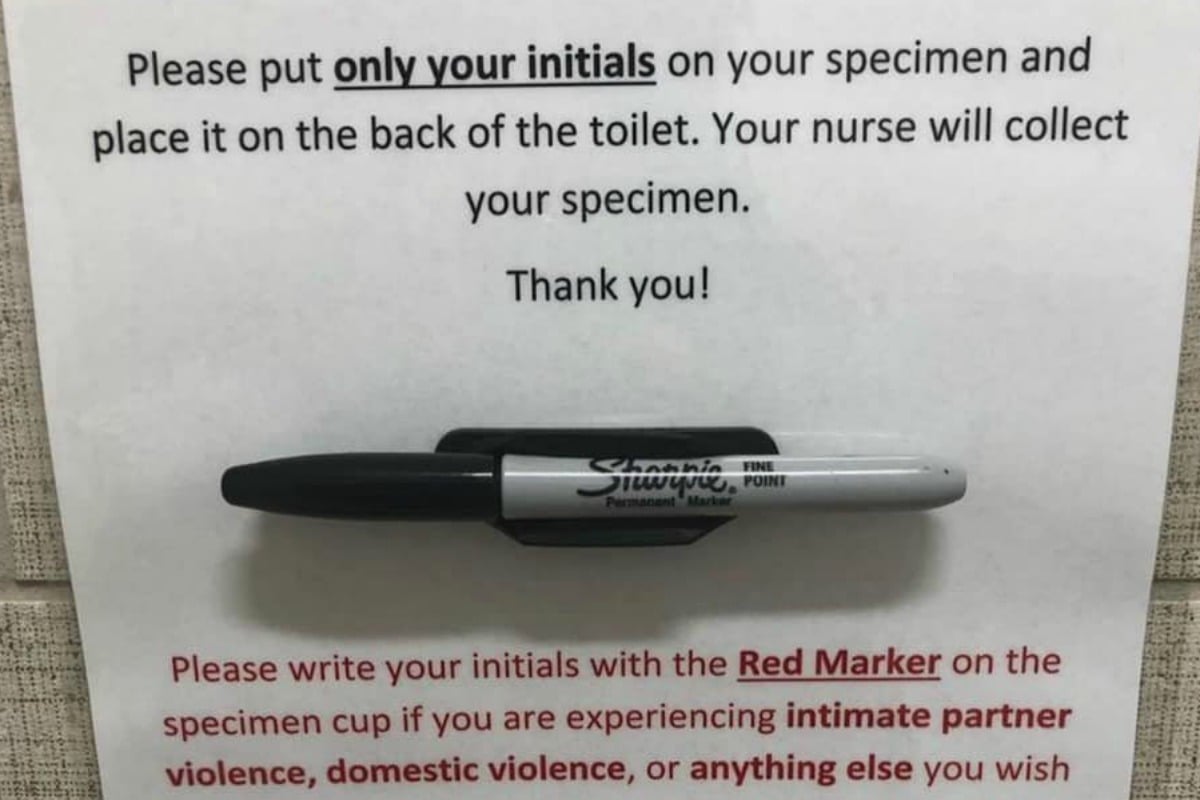
An unknown hospital clinic is giving patients an ingenious way to signal whether they are dealing with domestic or family violence.
The sign, which went viral on Twitter last week, gives the patient two ways to return a urine sample to nurses.
While typically patients would use a black marker to initial the cup, the sign offers patients the option to use a red marker instead, to indicate they are experiencing domestic violence.
“Please put only your initials on your specimen and place it on the back of the toilet. Your nurse will collect your specimen,” the black text on the sign read.
“Please write your initials with the Red Marker on the specimen cup if you are experiencing intimate partner violence, domestic violence, or anything else you wish to discuss in confidence with your provider,” the red text on the sign read.
“We will ask anyone accompanying you today to leave the room before discussing your concerns.”
This is such a simple system but could save so many lives. Grateful to have seen it circulating (anon OP) and hope more places pick this up. #BelieveWomen #DomesticViolence pic.twitter.com/6g2KR4PCv0
— Green Leaf Geek (@greenleafgeek) January 19, 2020




























































































